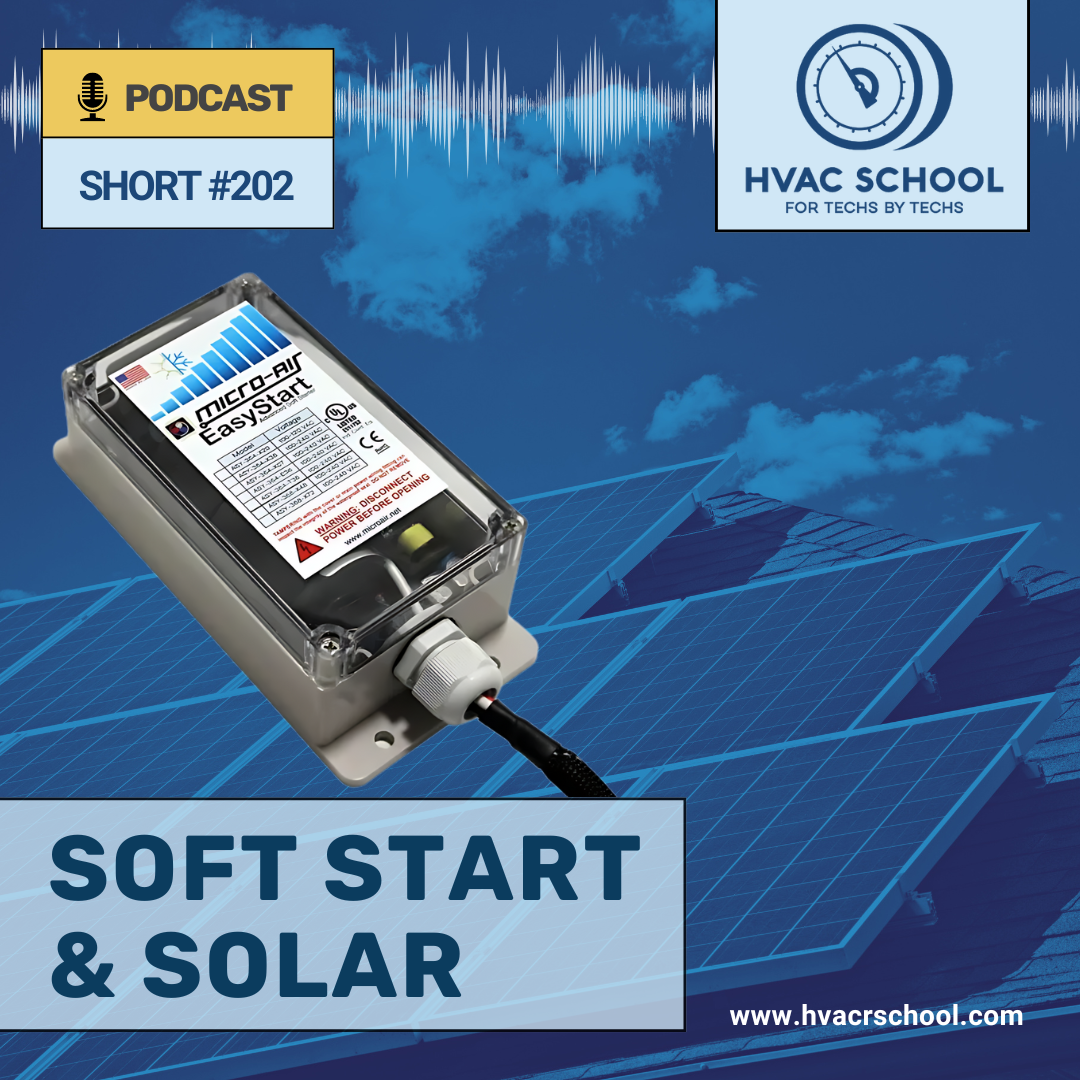Soft Start & Solar – Short #202

In this short podcast episode, Bryan dives into soft start & solar technology, which often work together. He also talks about how we can install ductless systems in homes that rely on solar power.
Soft starts are NOT hard starts. Hard starts add more current to the start (auxiliary) winding, which creates a stronger phase shift. Instead, soft starts control the current on the start and run windings and provide just enough of a phase shift to ramp up the motor slowly; it provides a regulated power supply, which means that a slow startup doesn't necessarily cause overheating because there is no locked rotor condition.
We can use soft starts on two-stage compressors but need to make sure the compressor goes up to high speed during the starting sequence. Soft starts “learn” the compressor's cycles, so we need to make sure they are trained to reach the high stage, not the low stage. In systems with multiple compressors, we need to have a separate soft start for each compressor. We don't need to use soft starts on inverter-driven or variable frequency drive (VFD) systems.
Soft starts also make sense in systems that rely on solar technology. Solar technology may be on-grid (where we sell back energy during peak times) or off-grid (where energy is banked). Ductless systems can work with solar energy, but they must be connected to the grid or the bank. Banked solar energy doesn't need to be rectified in the same way that AC power from the electrical company does, which may be advantageous for ductless systems that rely on DC-driven technology.
Have a question that you want us to answer on the podcast? Submit your questions at https://www.speakpipe.com/hvacschool.
Learn more about the 6th Annual HVACR Training Symposium at https://hvacrschool.com/Symposium.
Subscribe to our podcast on your iPhone or Android.
Subscribe to our YouTube channel.
Check out our handy calculators here or on the HVAC School Mobile App for Apple and Android.
Author:









Comments
To leave a comment, you need to log in.
Log In